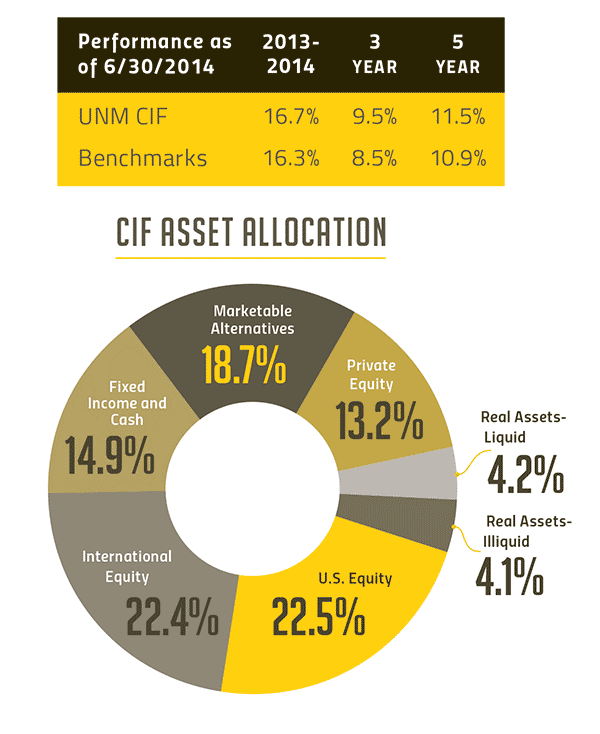University Investments and Endowment Funds
Post on: 4 Апрель, 2015 No Comment

University Investments and Endowment Funds
Authorizations:
The University of Michigan investment policies are governed by the Board of Regents. Principal sources of authorization are the University Bylaws and the Uniform Prudent Management of Institutional Funds Act ( UPMIFA ) enacted by the State of Michigan in 2009.
Centralized Management:
The University maintains centralized management for substantially all of its cash and investments. Units are not allowed to invest their own funds directly.
Types of Funds:
The University has four basic types of funds to invest:
- working capital
- endowment and quasi-endowment funds
- life income agreements (deferred gifts)
- insurance and staff benefits reserves
WORKING CAPITAL FUNDS
Working capital or cash balances, whether positive or negative, are automatically accumulated in total, by each fund and department identification for investment in the University Investment Pool. These are balances that are used for operating expenses or for funding capital projects.

University Investment Pool
The University Investment Pool ( UIP ) provides depositors daily access to their funds without risk of loss, with a corresponding rate of return. Under the UIP distribution policy approved by the Board of Regents, the rate of return is based on the 90-Day U.S. Treasury Bill rate.
finops.umich.edu/ under title UIP Rate Information .
Financial Operations is responsible for the administration of the University Investment Pool.
ENDOWMENT AND QUASI-ENDOWMENT FUNDS
In general, endowment funds are intended to be invested over the long-term, with a prudent portion of investment returns used to support University programs.
True Endowment Funds include contributions from bequests, trust distributions or outright gifts to the University and are from external donors. University funds may not, by law ( UMIFA ), create or add to a True Endowment. They are invested in perpetuity based on donor wishes. Distributions are utilized for restricted or general purposes based on donor intent. Establishing a new true endowment fund requires external funding equal to or greater than $10,000. The General Counsel office reviews all true endowment requests. True endowment funds are restricted for financial statement reporting purposes.
Quasi-Endowments Funds are either (1) established by donors and may include contributions from bequests, trust distributions or outright gifts to the University that were not designated as an endowment or (2) invested by the University utilizing surplus departmental operating capital. Quasi-endowment funds have the same investment strategy as true endowments. The principal differences are that quasi-endowments may be established using internal department funds and the principal balance may be withdrawn and expended, based upon University policy, generally after a minimum five-year investment period or lock-up. The same lock-up period applies to quarterly distributions that are re-invested into the quasi-endowment. The minimum amount needed to establish a quasi-endowment fund is $50,000 of University internal funds or $10,000 of donor-directed external funds. The working capital from the General Fund cannot be considered when determining surplus departmental operating capital. Quasi-endowment funds can be considered either restricted or unrestricted for financial statement reporting purposes.
University Endowment Fund
True endowments and quasi-endowments are invested in the University Endowment Fund. Contributions to the University Endowment Fund buy shares at the share value as of the end of the quarter (September, December, March and June). Share values are determined quarterly based on the market value of the overall pool. The market value of an endowment can be determined by multiplying the number of shares an endowment owns by the current quarters share value. Market value and owners shares are available via query in M-Pathways. The University Controller is the approving authority for the establishment of all new endowments.
University Endowment Fund Contributions
New contributions consist of all cash additions to the pool during a quarter. New contributions received buy additional shares of participation in the University Endowment Fund at quarter end, based on the quarter ending share value. The share value is recalculated quarterly based on the market value of the pool. This is accomplished by taking the pools current market value, subtracting any new contributions, and then dividing by the pre-existing shares in the pool. Once the share value has been determined, the new contribution is divided by the share value to determine how many new shares will be purchased and added to the pool. Distributions on shares associated with a new contribution will begin at the end of the next quarter, after the contribution has purchased shares in the University Endowment Fund, in accordance with the chart below:














